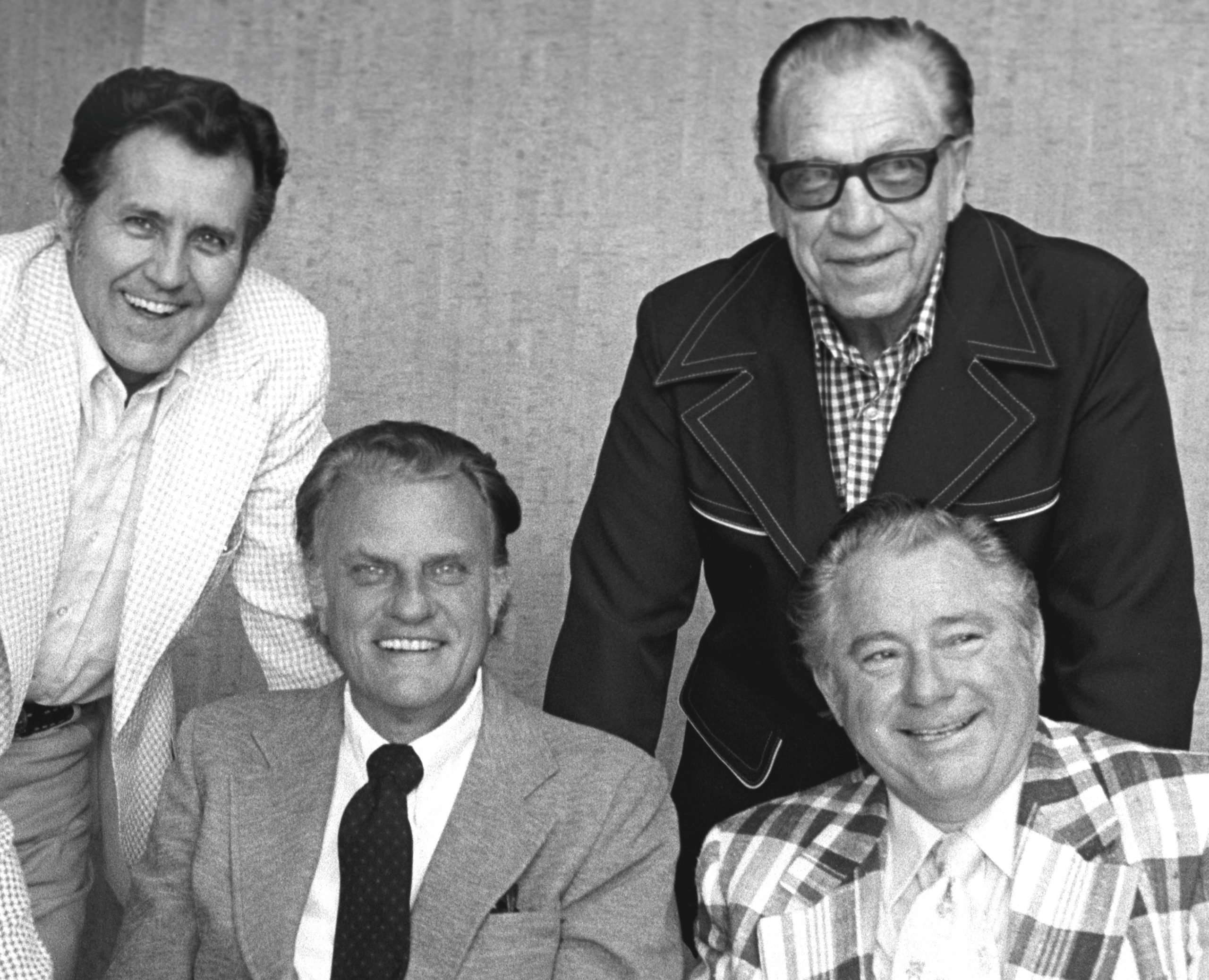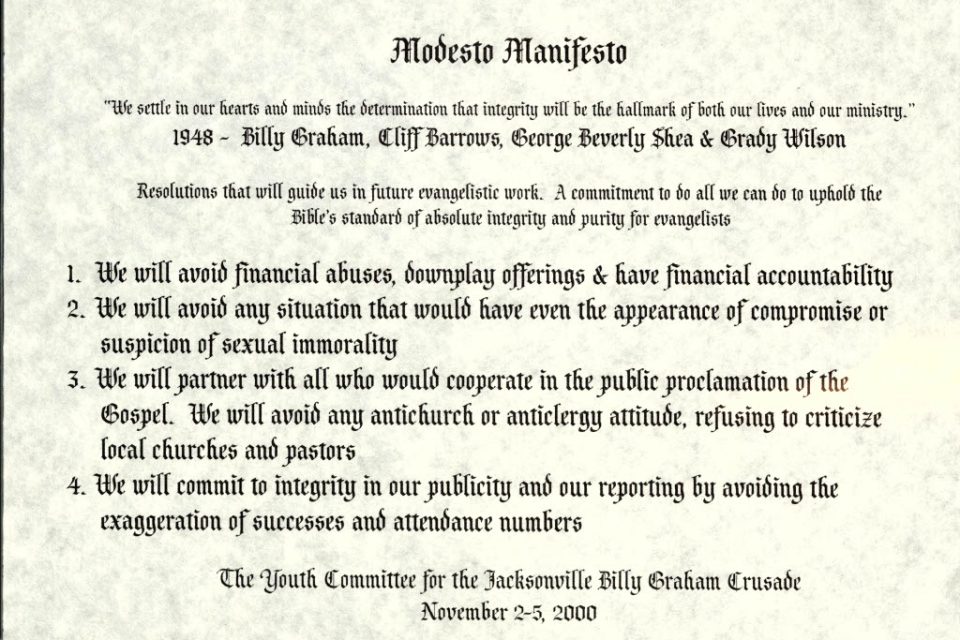Celebrating 75 Years of the Modesto Manifesto
October 6, 2023
Categories: BGEA Ministry, Billy Graham, Cliff Barrows, George Beverly Shea, This Date in History
Categories: BGEA Ministry, Billy Graham, Cliff Barrows, George Beverly Shea, This Date in History
In 1948, Billy Graham and his team were preparing for a Youth for Christ campaign in Modesto, California. They had just finished a campaign in Augusta, Georgia, and then drove cross-country to Modesto.
While in Modesto, Billy Graham, Cliff Barrows, George Beverly Shea, and Grady Wilson, talked periodically about the problems evangelists seemed to have and why mass evangelism seemed to have a poor image with people.

They determined there several factors that could give evangelists a bad name, and they wanted to make sure they avoided those pitfalls as they grew their evangelistic ministry.
The first item they agreed was a potential pitfall was money. At the time, nearly all evangelists were supported by “love offerings,” collections taken during the meetings. Many evangelists would use strong emotional appeals in order to draw the most giving. And, with little accountability for finances, this led to many evangelists abusing the system and seeking only personal gain. Billy Graham and his team agreed they would avoid all financial abuse, downplay any offering during the actual event, and rely as much as possible on money raised by the local committees in advance. All money would be under strict accounting and each man would take a salary so that no matter how much more money might be raised, it didn’t add more to their personal bank accounts.
The second potential snare was sexual immorality. With evangelists constantly on the road, away from their families, temptation would be easy to find. Billy Graham and his team agreed from that day forward to avoid even the appearance of immorality. The men did not travel, meet, or eat alone with a woman other than their own wife.
The third hazard was the temptation to criticize each other and other pastors and churches, which would undermine their testimony and effectiveness as preachers of the Gospel. The four men agreed criticizing each other and the churches was only counterproductive, so they determined to cooperate in all things related to the public proclamation of the Gospel and avoid an attitude of being “antichurch” or “anticlergy.” It was this commitment to a shared purpose that enabled the team never to argue or have a falling out. The men remained close friends and colleagues throughout their lives.
The final issue was publicity – many evangelists of the time over-exaggerated their success through claiming more people attended events than actually had come. Any false claims would discredit the entirety of their work. The team agreed they would always be factual in their publicity and reporting so there would be no cause for suspicion.
Billy Graham writes in his autobiography, Just As I Am, “So much for the Modesto Manifesto, as Cliff called it in later years. In reality, it did not mark a radical departure for us; we had always held these principles. It did, however, settle in our hearts and minds, once and for all, the determination that integrity would be the hallmark of both our lives and our ministry.”

The four men held strongly to this Modesto Manifesto, and 75 years later, their commitment to living a godly life continues through the hallmarks of the Billy Graham Evangelistic Association. It would have been easy for these talented, bright young men to fall prey to the downfalls that had already led many other evangelists to ruined careers, public scrutiny, and scandal. However, throughout their ministry that ended up spanning more than seven decades together, then men continually focused on God and the Gospel message He had commissioned them each to share.
Find out more about the ministry of Billy Graham and his team by taking The Journey of Faith tour at the Billy Graham Library. Admission is always free. Plan your visit.